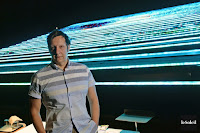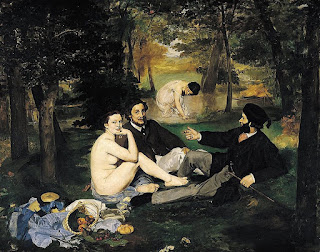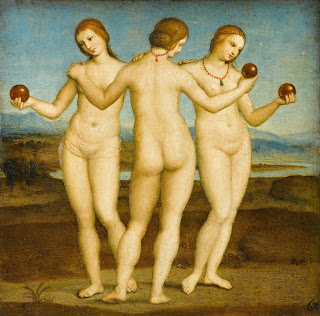
A show is the sum of its parts. Here are a few:
 Lepage brings the ocean made out of colored lights on
the stage, for our ecstatic experience. He lifts Deus on a Machina: a prince, who is a
troubadour from France (Eric Owens). His love, a distant countess from Tripoli
(Susanna Phillips). Lepage fakes the distant horizon on stage with lines that are smaller and closer together. A small pilgrim
(it’s a puppet really, we’re not asked to be fooled!) rows his boat in the far distance.
Goes off stage. Back on stage, he’s closer (a larger puppet on a larger boat,
clever Robert). Off stage again. This time he comes back as a real person, a young
pilgrim cum go-between (Tamara Mumford, who must get bored - and aren't we all - with mezzo-soprano roles crossdressing as young boys) singing like a nightingale on his frail skiff.
The chorus pop their heads like mermaids out of the waves, or their hands like
the tails of some marine creatures. Moonlit water. Huge waves in a storm. Lepage
celebrates unabashedly the secret magic of the stagecraft.
Lepage brings the ocean made out of colored lights on
the stage, for our ecstatic experience. He lifts Deus on a Machina: a prince, who is a
troubadour from France (Eric Owens). His love, a distant countess from Tripoli
(Susanna Phillips). Lepage fakes the distant horizon on stage with lines that are smaller and closer together. A small pilgrim
(it’s a puppet really, we’re not asked to be fooled!) rows his boat in the far distance.
Goes off stage. Back on stage, he’s closer (a larger puppet on a larger boat,
clever Robert). Off stage again. This time he comes back as a real person, a young
pilgrim cum go-between (Tamara Mumford, who must get bored - and aren't we all - with mezzo-soprano roles crossdressing as young boys) singing like a nightingale on his frail skiff.
The chorus pop their heads like mermaids out of the waves, or their hands like
the tails of some marine creatures. Moonlit water. Huge waves in a storm. Lepage
celebrates unabashedly the secret magic of the stagecraft.
It’s too easy being sarcastic, I shall not dwell on how hard it is
to believe a very bulky man is dying on stage of deprivation. I shall neither qualify nor quantify the acting skills of
the soprano. On the other hand, every one could sing, while the mezzo-soprano could both sing and act.
The orchestral and choral music might not have broken boundaries but the
singing by most apt artists - it's the Met - was thoroughly enjoyable. An opera written by a woman
composer (Kajji Sarriaho) conducted by a talented woman conductor (Susanna Mällki) on the same
night at the Met?! Quite the femme celebration! Pour the Pro Secco out!
Best part? Libretto by esteemed Lebanese writer Amin Maalouf. What a treat it must have been for him to write poetry that people are actually going to listen to. In the 21st
century. It’s obvious Maalouf immersed himself enthusiastically in this work. The lyrics, funny at times, are more often simple
and poetic. A beautiful tale of longing for the Other, of crossings, of cultures coming together with a tragic end. In
real life, what love encounter ever ends well? Unless both partners
die at the very same time in their sleep, unaware of impeding death, their bodies entangled, while dreaming of love?














